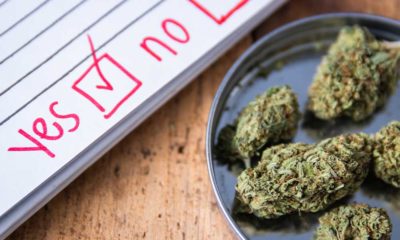
Cannabis
Feds Approve Study to Analyze Dangers of ‘Spice’
The University of Arkansas for Medical Sciences (UAMS) recently received the first federal grant to study the dangers of synthetic marijuana, and it’s about time.
Researchers will get $2.7 million from the National Institutes of Health to look at the toxicity of the dangerous cannabis substitute.
“Synthetic cannabinoid products such as K2 and Spice are deceptively marketed as safe and legal alternatives to marijuana, but admissions to emergency rooms and calls to poison control centers suggest that they are certainly not safe,” said Paul Prather, Ph.D., the study’s principal investigator and professor in the UAMS College of Medicine Department of Pharmacology and Toxicology. “Users of these products are experiencing psychosis, seizures, heart attacks and even death.”
Synthetic marijuana is a misleading substance. While many believe it is simply a different version of marijuana, it is actually far from it. Synthetic marijuana is typically dried plant matter sprayed with synthetic cannabinoids. That sounds innocent enough, but the effects of smoking this substance can be dangerous.
Synthetic marijuana, often sold under the brand names “Spice” or “K2,” is very cheap. You can often find it for $1 per gram. Because of this, many poorer Americans have been the victim of its effects.
Many forms of “Spice” are deemed illegal by the DEA, but manufacturers are constantly changing its chemical makeup to produce something that is slightly different than what is considered the illegal substance. This and other factors make it so no one really knows what they’re getting when they purchase it, and many people have died from consuming chemicals in synthetic marijuana that can cause heart problems and other medical issues.
The UAMS team will spend the next five years studying these substances in an effort to educate policymakers and the public on the dangers of consuming the drug.
“Our goal is to provide the public and scientific community definitive information that these compounds are not an alternate form of marijuana that’s safe,” Prather said. “This would give federal and state agencies grounds for further regulating these compounds.”
They will use human cells in mice to analyze the effects, and will also look at the medical records of people who have been admitted to the E.R. after using “Spice”.
Many people use synthetic cannabis to get high without doing something that can later be detected on a drug test. It’s currently extremely difficult to create a drug test that can identify if someone has used the drug. This has caused many who thought they were consuming a safe product to die just to avoid losing a job or being kicked out of the military.
It seems the use of synthetic marijuana could be lessened by legalizing cannabis or lessening the prevalence of drug tests. Until those things happens, researchers will be forced to study how this dangerous drug affects humans and what scientific efforts to counteract its effects may be able to accomplish.
Have you ever tried Spice?

























